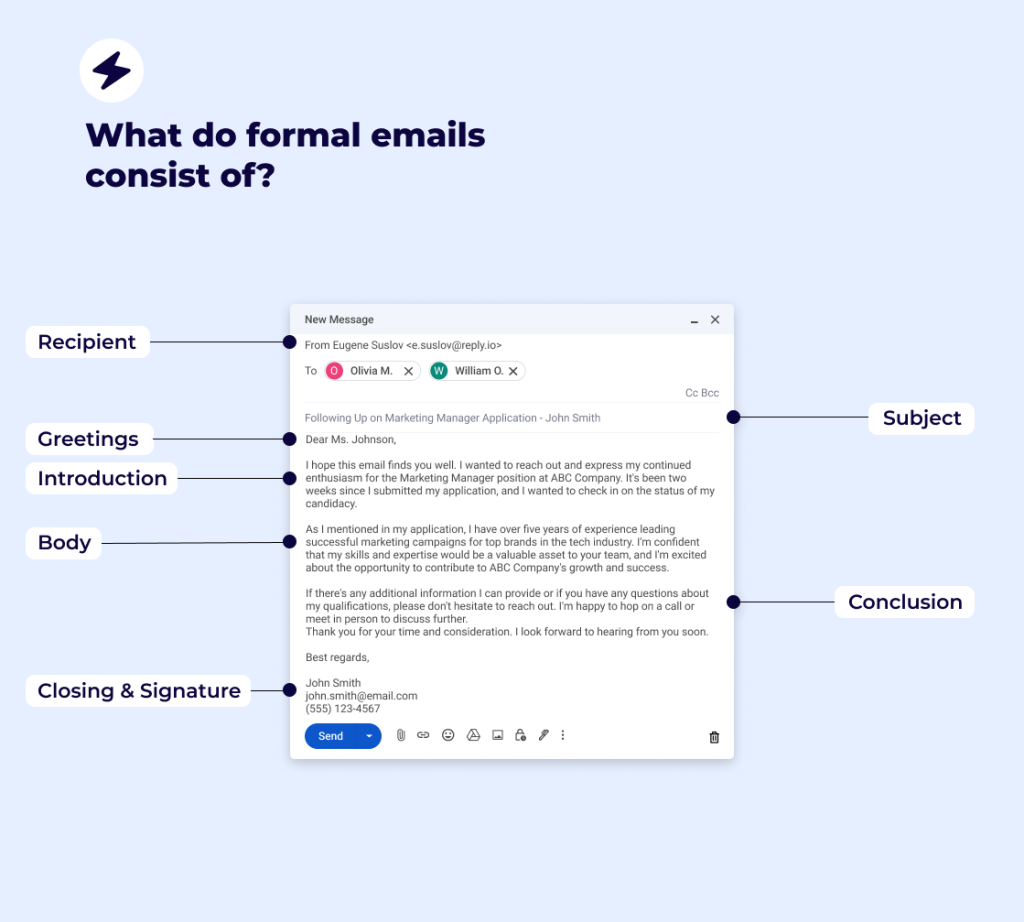What are the basics of email etiquette?
Formal emails differ from informal ones in one crucial way—you need to follow specific rules and guidelines to sound professional. It’s essential for maintaining a professional image and building strong relationships with your recipients.

Here are some key tips to keep in mind.
1. Address your recipients respectfully
Always address your recipients by their preferred name and title, if known.
If you’re unsure how to address someone, err on the side of formality and use a standard salutation. You can choose one mentioned above.
2. Don’t use colloquial words
In a formal email, it’s best to avoid using slang, jargon, or overly casual language.
Stick to clear, concise, professional language that anyone can understand, regardless of their background or expertise.
3. Check, run through, and proofread your email
Before you hit “send,” take a few minutes to proofread your email for any typos, grammatical errors, or awkward phrasing.
Use spell-check and grammar tools like Grammarly or Hemingway to catch any mistakes you might have missed, and read your email out loud to ensure it flows smoothly and makes sense.
4. Leave emojis for your F&F
Avoid using emoticons, emojis, or excessive formatting like ALL CAPS, bold, italic, or colored text.
While these elements can be useful for adding personality or emphasis to a casual email, they can come across as unprofessional or immature in a formal setting.
5. Pay attention to cultural differences
If you’re emailing someone from a different cultural background or country, it’s important to be mindful of potential differences in communication styles, norms, and expectations.
What might be considered polite or professional in one culture could be seen as rude or offensive in another.
6. Keep to a respectful tone
Be particularly careful with humor, sarcasm, or idioms, as these can easily get lost in translation or misinterpreted across cultures. \
If in doubt, err on the side of caution and stick to clear, straightforward language.











